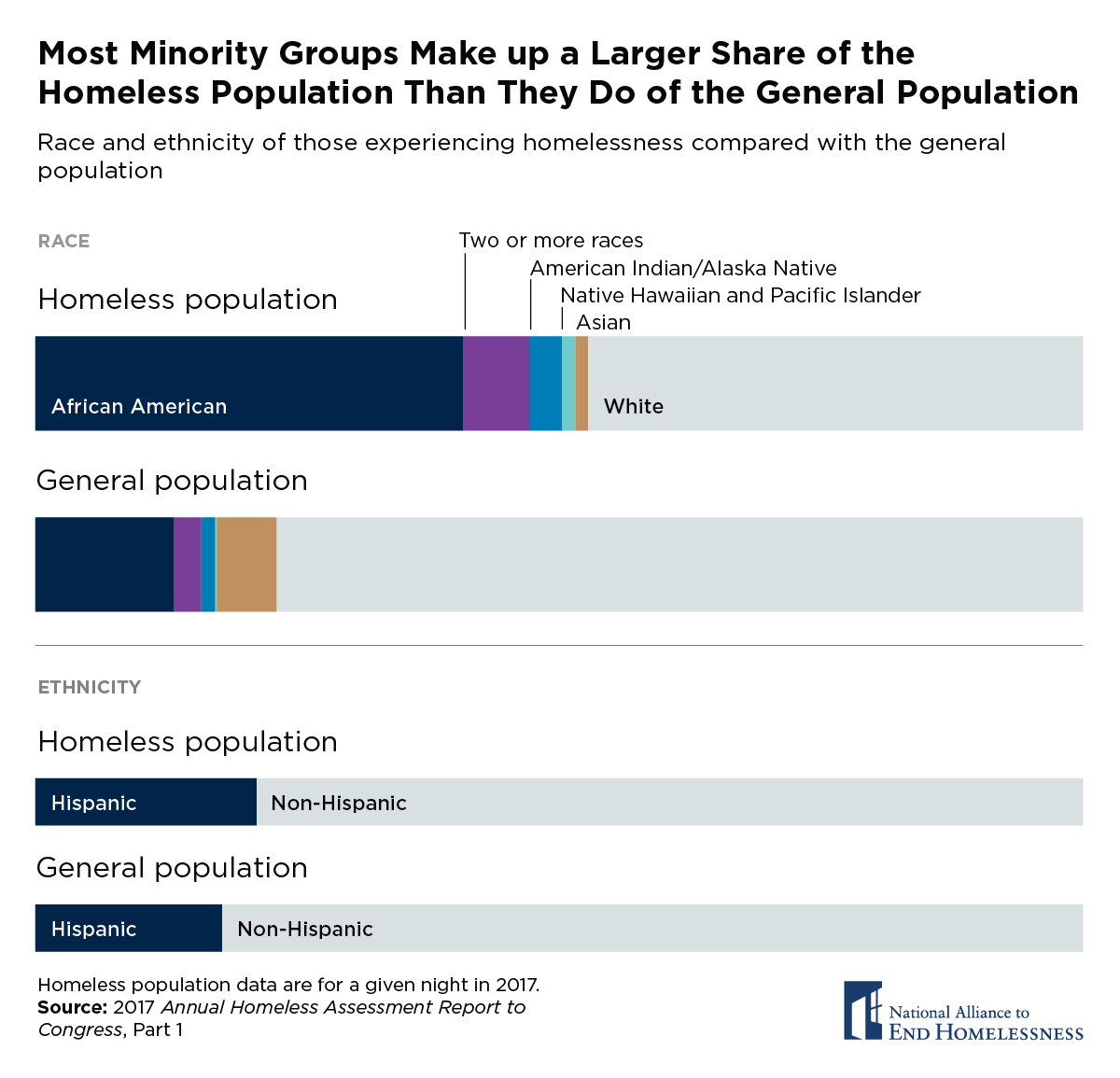Most minority groups in the United States experience homelessness at higher rates than Whites, and therefore make up a disproportionate share of the homeless population:
- African Americans make up more than 40% of the homeless population, but represent 13 percent of the general population.
- American Indians/Alaska Natives, Native Hawaiians and Pacific Islanders, and those of more than one race each make up less than 5 percent of the general population. But each group’s share of the homeless population is more than double their share of the general population.
- The proportion of Native Hawaiians and Pacific Islanders in the homeless population (1.3 percent) is 6.5 times higher than their proportion in the general population (0.2 percent).
- Those identifying as Hispanic make up 18 percent of the general population but 21 percent of the homeless population.
- Both Whites and Asians are significantly underrepresented among the homeless population.

Any effort to end homelessness in the United States must address the range of issues that have resulted from racial inequity. This includes assuring affordable, stable housing for all. Systems, programs and individuals that serve people experiencing homelessness should monitor their outcomes in order to eliminate disparities in the way they provide services.
